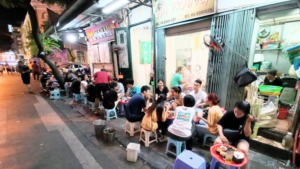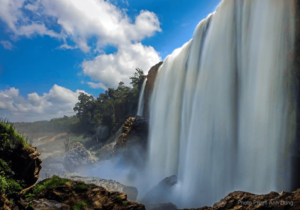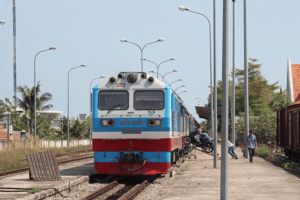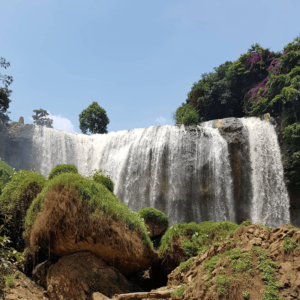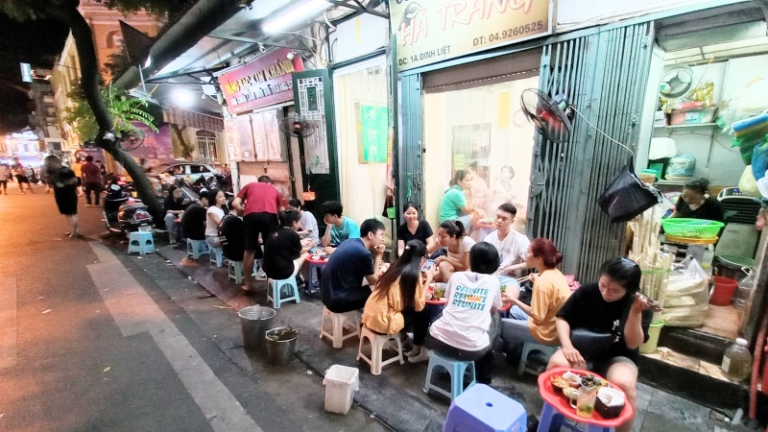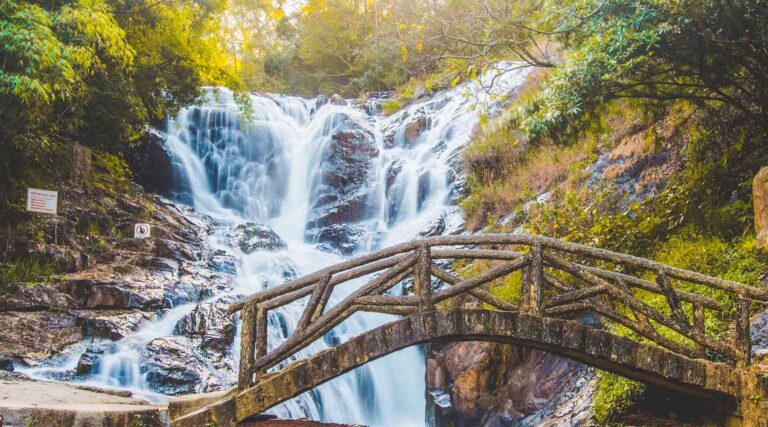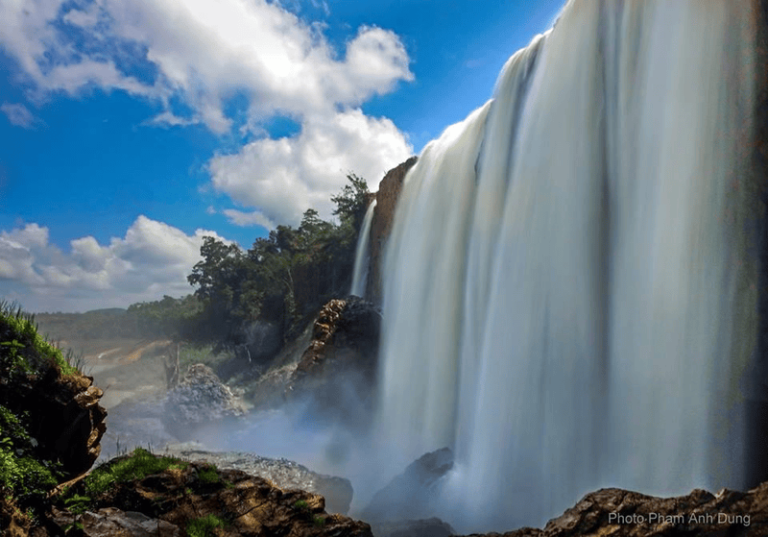Let’s explore this fascinating Nhat Tan Bridge, which is regarded as one of the most amazing cable-stayed bridges over the Red River in Hanoi. We show more about its history, the architectural highlights, and how to visit it.
Overview of Nhat Tan bridge – a symbol of Hanoi’s modern development

Nhat Tan Bridge Hanoi is an iconic structure that overspans the Red River right in the heart of Hanoi and has become a symbol of rapid development in the city. On the northern bank of the Red River, it connects the inner-city bustling streets with the suburban district of Dong Anh. This strategic position helps this bridge become a prominent landmark and one of the popular tourist attractions.
People often wonder where Nhat Tan Bridge really is. Starting from Phu Thuong Ward in Tay Ho District, it reaches as far as Vinh Ngoc Commune in Dong Anh District, bridging the gap between the urban core and the outskirts of Hanoi. It has boosted economic development and turned the area around it into a prime choice for residential and commercial purposes.
From a purely functional bridge to one of the most popular tourist spots in Hanoi, Nhat Tan Bridge is a panoramic view of the Red River and city skyline that you should not miss if you are in Hanoi. Owing to its unique design and strategic placement, it has clearly fastened its position as a modern icon, contributing to the ever-changing skyline of the city.
History and construction of Nhat Tan bridge

Nhat Tan Bridge Hanoi was considered a monumental construction and was built with a big investment from Japan. The value of the whole project reached 13,626 billion VND, where the major source was from Japan while it was supplemented by the Vietnamese government.
It began in March 2009, spearheaded by a team of Vietnamese and Japanese engineers and laborers, guiding the whole work. Finally, under the tutelage of a renowned Japanese construction firm, it was completed in April 2015, hence marking one of the important features in infrastructure development within Hanoi City.
It measures a main span of 1,500 square meters while the road surface has a width of 33.2 meters. It carries six lanes for traffic, two for emergency use, and approach roads of 70-100 meters in width on the north side and 64 meters on the south side.
Architectural features and design of Nhat Tan bridge

Nhat Tan Bridge in Hanoi was counted among the most beautiful architectural designs and an eye-catcher every night due to its magnificent lighting. The sleek profile, combined with an elegant cable-stayed structure, made it an instantly recognizable icon of Hanoi.
Another unique feature of Nhat Tan Bridge is the system of lights. As night dawns, the whole pylon and cables of the bridge with thousands of LED lights will be absolutely magical, which can be perceived from afar. The lighthouse and bright lights turn the building into a magnet for photo shooting.
Additional LED lights are set up for the light-emitting diodes lighting of the bridge on national holidays such as National Day, Liberation Day, Lunar New Year, and International Workers’ Day. Flashing lights make the bridge just dazzling. It has been a familiar custom in the capital city of Hanoi, with both locals and tourists alike drawn by the bright illuminations.
Thus, modern architecture, combined with striking night-time illuminations, turned the bridge into one of the main places for leisure. Many residents and guests of the city like to take evening walks and ride a bicycle across this bridge, looking at the city’s skyline and serene ambiance. Nhat Tan Bridge Hanoi became one of the modern symbols of the city, a favorite place for socialization and relaxation.
Read more: Hanoi Botanical Garden: A Tranquil Green Escape in the Heart of the City
Visiting Nhat Tan bridge – A tourist perspective
How to get to Nhat Tan Bridge from the tourist perspective
There are two main ways to cross Nhat Tan Bridge from the western side of Tay Ho (West Lake). These are:
- Route 1: Follow Yen Phu Street, Au Co Street, and An Duong Vuong Street to the intersection with the 1C branch road. Turn onto the bridge.
- Route 2: Move on Hoang Quoc Viet Street and Lac Long Quan Street to the intersection with Ring Road 2 and Xuan La Street turns onto the bridge.
Note that some types of vehicles and pedestrians are banned from passing Nhat Tan Bridge:
- Suspended vehicles: Rickshaws, animal-drawn carts, and pedestrians are not allowed to pass the bridge.
- Restricted vehicles: Bicycles, mopeds, and electric bicycles are permitted only from 10 PM until 5 AM of the following day.
- Traffic rules: All vehicles must travel in their respective lanes to ensure the safety of all vehicles crossing. All users are requested to drive cautiously due to the volume of traffic and the number of lanes on this bridge.
The best time to visit Nhat Tan Bridge

Nhat Tan Bridge Hanoi is at its best in the late afternoon and early evening, as the sun has started setting. The setting sun reflects a warm tone onto the bridge and throughout the landscape, forming an exhilarating scene worth witnessing. It offers panoramic views of the Red River and the city skyline as the sun sets below the horizon.
Nearby attractions
Nhat Tan Bridge is located near several other popular tourist attractions in Hanoi, some of which are:
- Tay Ho Palace: It’s a historic palace on the west shore of West Lake and offers insight into the lives of Vietnam’s royal family. It has beautiful gardens and an amazing overview of the lake.

- West Lake: The West Lake is one of the major attractions in Hanoi and is a good place for boating and fishing, or also just to hang out in its quiet environment. There are several temples and pagodas on the lake; one of the oldest Buddhist temples in Vietnam includes the Tran Quoc Pagoda.

- Lotte Mall Tay Ho: Lotte Mall Tay Ho is the popular shopping and entertainment complex located in the Tay Ho district of Hanoi. You can find a variety of products at this mall, including clothing, electronics, cosmetics, and home goods.
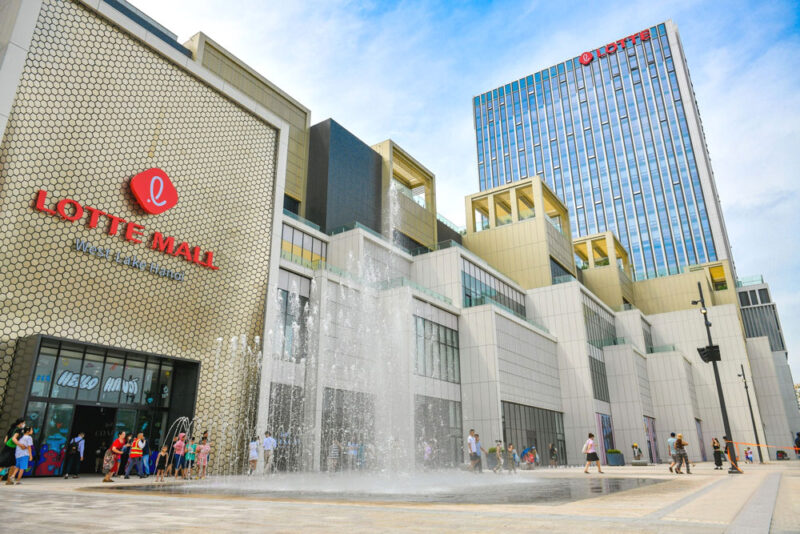
Of course, the highlight of Nhat Tan Bridge in the Hanoi trip is the remarkable architecture compared with the beauty of its location and view. This is definitely a memory that should be taken home, whether you are a historical freak, a nature lover, or just on an outing.
Read more: Beat the Hanoi Heat: A Detailed Guide to West Lake Water Park



